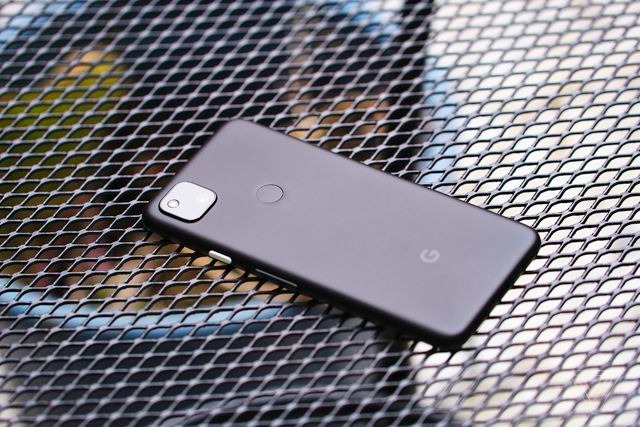Google’s latest update for the Pixel 4A has stirred up significant concern among its users, especially as reports emerge about the potential for reduced battery life following its release. The Pixel 4A, celebrated for its affordability and well-rounded performance, has been a go-to device for those seeking a balance of cost and functionality. However, the recent software update appears to have introduced an unintended consequence that could frustrate users who prioritize battery performance.

For many, battery life remains a critical feature when choosing a smartphone. It directly impacts usability, convenience, and overall satisfaction. The Pixel 4A’s battery has long been considered one of its stronger attributes. Its 3140mAh capacity, combined with Google’s optimizations in Android, ensured the device could comfortably last a day under moderate usage. This reliability made it a popular choice among users seeking a dependable and affordable option. However, the latest developments have raised questions about whether these expectations can still be met.
The update in question was primarily aimed at improving security and introducing new features. Google has consistently rolled out updates to enhance its devices, ensuring users benefit from the latest Android developments and improved performance. Unfortunately, in this instance, it seems the changes have come with a trade-off. Users have reported noticing faster battery drain after installing the update, even when their usage patterns have remained consistent. This change has sparked discussions across forums, with some pointing to potential issues in background processes or altered power management settings introduced in the update.
When addressing battery-related concerns, it’s essential to consider the interplay between hardware and software. Smartphones, including the Pixel 4A, rely on a combination of efficient hardware components and finely tuned software to deliver optimal battery performance. Any changes in software, such as updates to operating systems or the introduction of new features, can inadvertently affect how resources are utilized. For instance, tweaks to the operating system can increase CPU usage or maintain connections to certain services for longer durations, both of which can lead to higher power consumption.
Analyzing user reports, it becomes evident that the reduced battery life is not universal but affects a significant subset of Pixel 4A owners. The inconsistencies suggest that the issue may be related to specific usage scenarios or configurations. Some users have speculated that the update may have inadvertently increased background activity for certain apps or processes. Others point to potential changes in network management or screen calibration, both of which can have a noticeable impact on battery life.
For users experiencing these issues, troubleshooting steps can help identify and mitigate the problem. Adjusting app permissions, disabling unnecessary background processes, and recalibrating battery optimization settings are some of the measures that may yield improvements. However, these steps are not always straightforward for the average user and may not fully resolve the underlying issue caused by the update.
From Google’s perspective, responding to such feedback is crucial. The company has built a reputation for prioritizing user experience, and addressing battery concerns promptly will be key to maintaining trust among its user base. Software updates are an integral part of smartphone ecosystems, and ensuring they enhance rather than detract from device performance is a balancing act. Google’s ability to issue a corrective patch or update addressing the reported battery drain will demonstrate its commitment to user satisfaction.
To better understand the scope of the issue, it is helpful to compare the Pixel 4A’s performance before and after the update. Data from benchmarks and user reviews prior to the update highlighted consistent battery performance, with users achieving screen-on times of six to seven hours on average. Post-update feedback, however, indicates a decline, with some users reporting screen-on times reduced by as much as 20–30%. The following table illustrates the changes in key battery performance metrics as reported by affected users:
| Metric | Pre-Update | Post-Update | Change |
|---|---|---|---|
| Average Screen-On Time | 6–7 hours | 4–5.5 hours | -20% to -30% |
| Standby Battery Drain | 1–2% per hour | 3–4% per hour | +50% to +100% |
| Total Daily Battery Life | 18–20 hours | 12–15 hours | -25% to -33% |
These figures underscore the severity of the impact for some users. While not everyone experiences such drastic changes, the variability highlights the complexity of optimizing software updates across a diverse user base with varying usage patterns.
In addition to addressing battery performance, the situation also sheds light on the broader challenges of managing software updates. Smartphone manufacturers must strike a balance between introducing new features, enhancing security, and ensuring compatibility with existing hardware. Each update represents a series of trade-offs, and unforeseen consequences like the current battery issue with the Pixel 4A are not uncommon.
The Pixel 4A’s battery concerns also serve as a reminder of the importance of user feedback in shaping software development. Platforms like Google’s support forums, Reddit, and other tech communities provide valuable insights into how updates affect real-world usage. Companies that actively monitor and respond to this feedback can adapt more effectively, demonstrating transparency and accountability.
For affected users, patience may be required as Google works to investigate and address the issue. In the meantime, employing battery-saving measures such as activating power-saving modes, reducing screen brightness, and minimizing background app activity can help mitigate the impact. It’s also worth considering whether certain new features introduced in the update, such as enhanced notifications or visual changes, may contribute to increased power consumption and whether disabling these features temporarily could improve battery life.
Ultimately, the success of Google’s response to this issue will depend on how quickly and effectively it can deploy a fix. For the Pixel 4A, a device that has earned praise for its value proposition, resolving this battery concern will be essential to maintaining its appeal. By prioritizing user feedback and ensuring future updates are rigorously tested for potential impacts on battery life, Google can reaffirm its commitment to delivering quality products and experiences.
while the Pixel 4A’s latest update has introduced an unexpected challenge for some users, it also highlights the ongoing evolution of smartphone technology. Balancing innovation with stability is no easy task, but it is a challenge that companies like Google must continuously navigate. For users, staying informed, sharing feedback, and exploring solutions will be critical in addressing the current issue and ensuring their devices continue to meet their needs.










Add Comment